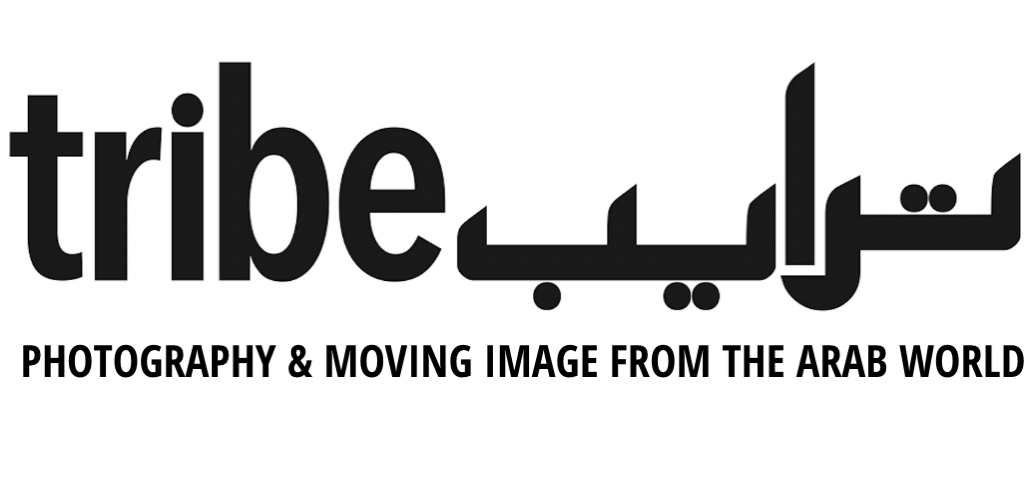Imminent Move
By Jack Persekian
Tarek Al-Ghoussein, Untitled 7 (C Series), (2007) Digital Print, 55 x 75 cm., Untitled 3 (C Series), (2007) Digital Print, 55 x 75 cm., Untitled 1B (C Series), (2007) Digital Print, 55 x 75 cm. Images courtesy of The Third Line, Dubai.
I often wondered why Tarek Al-Ghoussein had come to use a blue fabric as a recurring prop in his photographs. He drags it around the desert, covers shed-like structures with it, hides underneath it, and always keeps it in his car, just in case an opportunity unveils itself (I’ve seen it in the trunk of his Alfa). I have never asked him why, preferring to allow room for my imagination and interpretation. Artist Luchezar Boyadjiev said that people in the media and those familiar with photo and film editing know that the color blue can easily be digitally manipulated; it can be taken away and replaced by another color or image. It carries the potential of being re-worked, of confusing fact with deception. One can imagine that what appears as a poetic longing for a shelter or home in Al-Ghoussein’s works could very well be a camouflaged exit strategy of a last resort, tucked under blue fabric, a makeshift blue shield. And what initially gives the impression of a relentless effort to go home is eventually betrayed by the futility of the act and the bleakness of the landscape—which in no way resembles a potential home, not even a transient one—and leads me to question the motives behind it all. Over time, my probing and skepticism about his intentions shift; and I come to see his various series from different perspectives every time I review, present, and write about them. It is a shift underlined by presumptions provoked by my (not his) distance from home.
Exit strategies and acts of flight have always had strong associations with bravery. As a well-known saying in Arabic tells us, “Escape is two-thirds of manhood.” This mainly refers to strategies of survival, for there is an assumption that one returns stronger after having fled peril and, armed with the experience and wisdom that “What doesn’t kill me makes me stronger,” better equipped to fight back and defend property, rights, and honor. Peril—being trapped, under-siege, chased, threatened, in constant search for shelter, a refuge, an escape—takes a heavy toll on one’s productive capabilities and creative prowess. Hence, it’s not the search for a home that interests me in Al-Ghoussein’s work, but his yearning for possibilities, allusions to choices, and quest for freedom of movement, expression, and action. The endless expanse of horizon in his work opens this potential, yet simultaneously reminds us that it is not an easy trail to walk; it is a desert path and, most of all, it is lonely.
In Al-Ghoussein’s early work, he covered his face and confronted elaborate landscapes animated with airplanes, ships, and concrete walls. Then, and all too gradually, he toned down his tableaux—now, where gestures appear, they are subtle and minimal. In contrast to his earlier works, he has pushed the figure of himself far into the background. Where he was once so visible, a dominant and obvious protagonist, in his later series, he tends to be further away, a minor figure half submerged in the sand, walking along an endless road or passing through a gate in the middle of nowhere, as though some precursor to an escape. Where once he sought to highlight his predicament amidst a complex environment, he now takes a more practical outlook on life, weighing options and setting up his best advance tactic.
This brings me back to the blue fabric and its endless possibilities for manipulation. In Al-Ghoussein’s penultimate maneuver, he reintroduces the figure (himself), the tent-like blue fabric, and running walls, and gradually covers them as the series develops. I cannot foretell his final move. I do not suppose that he would digitally modify the images and take advantage of the blue filter (as the technique is called) to transcend the grounds he has been redundantly pacing for some time. I can only predict that a shift is imminent—not a deceptive manipulation of facts but a real move in pursuit of a destination, which might, unfortunately, be further away from home.
Imminent Move by Jack Persekian is excerpted from In Absentia: Photographs by Tarek Al-Ghoussein, published in 2009 by Works on Paper, The Third Line, Dubai. ISBN: 978-981-245-805-6




